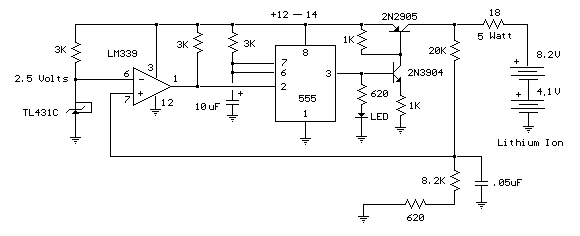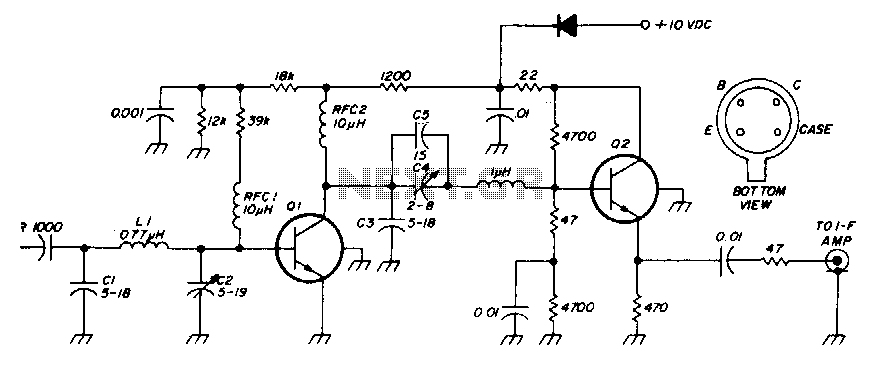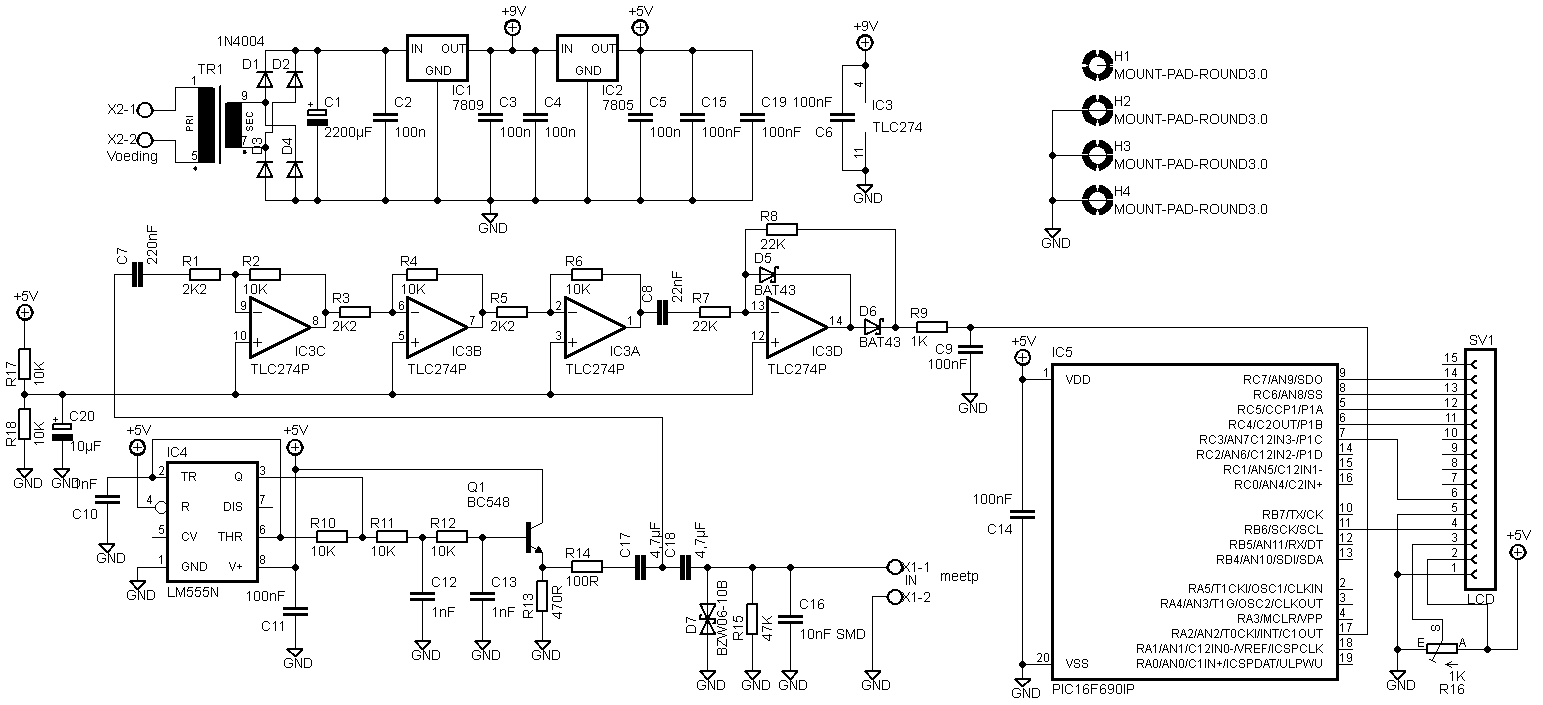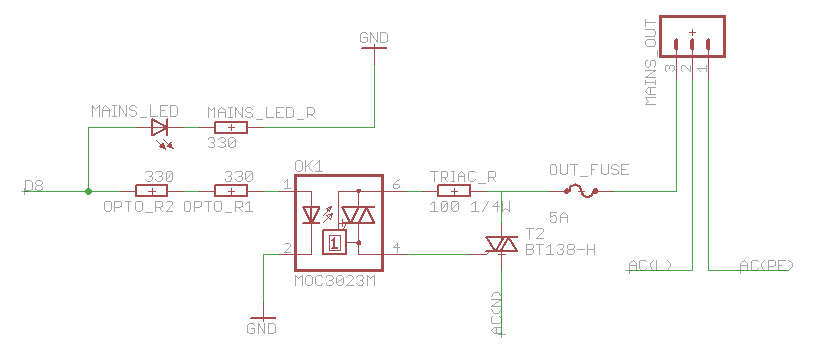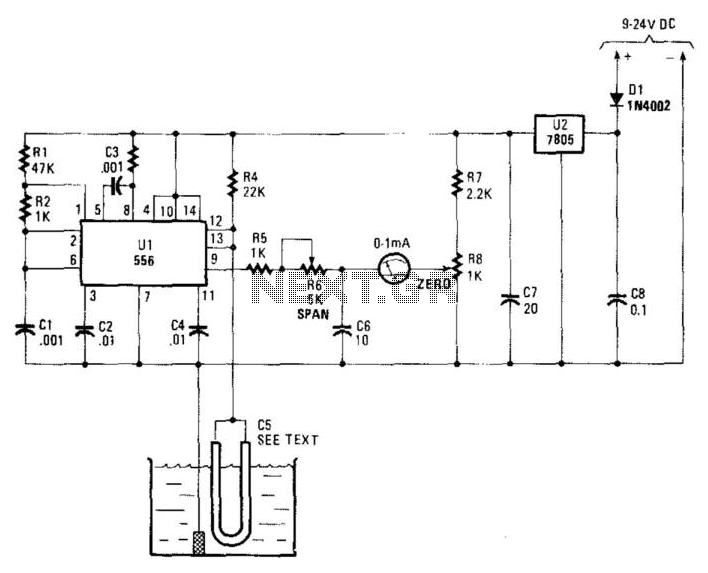
2.4 GHz Field Strength Meter Circuit with Optional Amplifier
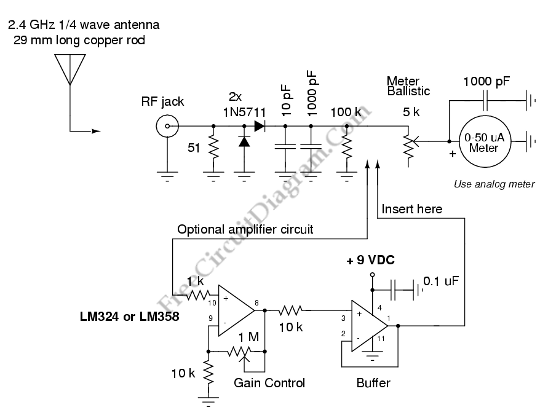
Field strength meters are essential tools for individuals working with radio transmitter electronics. The following is an example of a circuit that serves this purpose.
A field strength meter circuit typically consists of several key components, including an antenna, a RF amplifier, a detector, and a display unit. The antenna captures the electromagnetic waves emitted by the radio transmitter, converting them into a small RF signal. This RF signal is then amplified by the RF amplifier to ensure it is strong enough for further processing.
After amplification, the signal is directed to a detector, which demodulates the RF signal to extract the envelope of the waveform, providing a representation of the field strength. The output from the detector is usually a DC voltage that corresponds to the strength of the received signal. This voltage is then fed to a display unit, which can be an analog meter or a digital readout, allowing the user to visually assess the strength of the radio field.
In some designs, additional features may be included, such as calibration controls, frequency selectivity filters, or even data logging capabilities. Calibration controls are essential for ensuring accurate measurements, allowing the user to adjust the meter to account for variations in the environment or the characteristics of the antenna. Frequency filters can help isolate specific frequency bands, providing more precise measurements for particular applications.
Overall, a field strength meter circuit is a vital component in the field of radio frequency engineering, aiding in the design, testing, and maintenance of radio transmission systems.Field strength meter is a must have equipment if you`re dealing with radio transmitter electronics. Here is one example of this kind of circuit that works for. 🔗 External reference
A field strength meter circuit typically consists of several key components, including an antenna, a RF amplifier, a detector, and a display unit. The antenna captures the electromagnetic waves emitted by the radio transmitter, converting them into a small RF signal. This RF signal is then amplified by the RF amplifier to ensure it is strong enough for further processing.
After amplification, the signal is directed to a detector, which demodulates the RF signal to extract the envelope of the waveform, providing a representation of the field strength. The output from the detector is usually a DC voltage that corresponds to the strength of the received signal. This voltage is then fed to a display unit, which can be an analog meter or a digital readout, allowing the user to visually assess the strength of the radio field.
In some designs, additional features may be included, such as calibration controls, frequency selectivity filters, or even data logging capabilities. Calibration controls are essential for ensuring accurate measurements, allowing the user to adjust the meter to account for variations in the environment or the characteristics of the antenna. Frequency filters can help isolate specific frequency bands, providing more precise measurements for particular applications.
Overall, a field strength meter circuit is a vital component in the field of radio frequency engineering, aiding in the design, testing, and maintenance of radio transmission systems.Field strength meter is a must have equipment if you`re dealing with radio transmitter electronics. Here is one example of this kind of circuit that works for. 🔗 External reference
